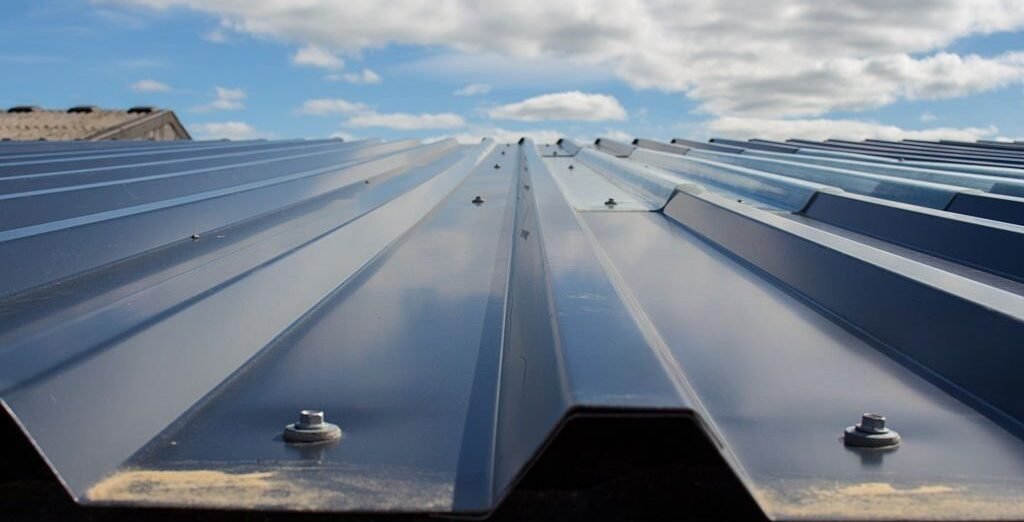Tin roofing remains a top choice for homeowners, contractors, and builders seeking a durable, low-maintenance, and timeless roofing solution. Its strength, resistance to harsh weather, and classic aesthetic make it ideal for homes, commercial buildings, and agricultural structures. A key question that often arises during roofing projects is, “How wide is tin roofing?” Understanding the standard and custom sizes of tin roofing panels is essential for planning, budgeting, and ensuring a smooth installation. We explores tin roofing dimensions, including standard widths, lengths, thicknesses, and custom options, while offering practical insights to help you choose the right size for your project.
What Is Tin Roofing?
Tin roofing refers to metal roofing made from lightweight, corrosion-resistant materials like tin-plated steel, galvanized steel, or aluminum. Though called “tin roofing,” modern versions often use advanced alloys coated with protective layers to enhance longevity. These roofs withstand extreme weather, resist rust, and require minimal upkeep, making them a practical choice for various buildings. Knowing the dimensions of tin roofing panels helps you calculate coverage, estimate costs, and achieve a watertight installation.
Standard Tin Roofing Sizes
Common Widths of Tin Roofing Panels
Tin roofing panels come in standard widths to suit a range of project needs. Most panels range from 12 to 36 inches wide. A 12-inch panel works well for smaller structures like sheds or accent roofs, offering a detailed look with more seams. The 24-inch panel is a popular choice for residential and commercial roofs, balancing coverage with ease of installation. Wider 36-inch panels cover larger areas quickly, making them ideal for expansive roofs on barns or warehouses. These measurements refer to the coverage width, accounting for overlaps needed to create a secure, leak-proof seal. For instance, a 36-inch panel may have a total width of 38 inches, but after overlapping, it covers 36 inches of roof surface.
Standard Lengths of Tin Roofing Panels
Tin roofing panels are available in standard lengths, typically ranging from 8 to 16 feet. An 8-foot panel suits smaller projects or areas with limited roof spans, such as porches. The 10-foot panel is versatile for residential roofs, offering a good balance of coverage and manageability. A 12-foot panel works well for larger homes or small commercial buildings. For long, uninterrupted roof runs, like those on industrial structures, 16-foot panels are often used. Some manufacturers provide panels up to 20 feet, though these require careful handling due to their size and weight.
Thickness of Tin Roofing Panels
The thickness of tin roofing panels, measured in gauges, impacts their durability and performance. A 0.5 mm (26 gauge) panel is lightweight and often used for wall cladding or less demanding applications. For roofing, a 0.7 mm (24 gauge) panel is preferred due to its strength and ability to withstand harsh weather. Thicker panels offer better resistance to damage but add weight, so your roof’s support structure must be strong enough to handle them.
Custom Tin Roofing Sizes
When to Opt for Custom Sizes
Standard sizes meet most project needs, but custom tin roofing sizes provide flexibility for unique designs. Custom panels are ideal for modern homes with unconventional roof shapes, such as curved or angular designs. Large-scale projects, like industrial warehouses, may require wider or longer panels to reduce seams and speed up installation. Custom sizes also suit specialized applications, such as historic restorations, where standard panels may not match the original aesthetic.
How to Order Custom Panels
Ordering custom tin roofing panels requires careful planning. Start by measuring your roof’s width and length to determine the number of panels needed. Add 5-10% extra material to account for overlaps and wastage. Next, consult a reputable manufacturer or supplier, sharing your measurements and project details. They can advise on available custom widths, lengths, and profiles, such as corrugated or standing seam. Custom panels may take longer to produce, so factor in lead times when planning your project. While custom sizes may cost more, they ensure a precise fit and enhance your roof’s appearance and functionality.
Factors to Consider When Choosing Tin Roofing Sizes
Roof Size and Slope
The size and slope of your roof play a major role in selecting panel dimensions. Large roofs benefit from wider 24- or 36-inch panels, which cover more area and reduce installation time. Steep roofs are easier to work with using narrower 12- or 24-inch panels, as they are lighter and simpler to handle. For low-slope roofs, wider panels minimize seams, reducing the risk of water pooling and leaks. Accurate roof measurements are crucial to avoid ordering too few or too many panels.
Weather and Climate Conditions
Local weather influences the choice of panel size and thickness. In areas with high winds, wider 36-inch panels provide better structural stability. Regions with heavy snow require thicker 0.7 mm panels to support the weight. In rain-prone areas, wider panels with fewer seams lower the risk of leaks. Always check local building codes, as some regions have specific requirements for roofing materials based on climate.
Aesthetic Preferences
The width of tin roofing panels affects your roof’s visual appeal. Narrow 12-inch panels create a traditional look with more visible seams, ideal for classic homes like colonials. Wider 36-inch panels offer a sleek, modern appearance, perfect for contemporary designs. Consider your building’s architectural style to choose a panel size that complements its overall look.
Installation and Handling Considerations
Wider and longer panels cover more area but are heavier and harder to manage. Ensure your installation team has the equipment and skills to handle larger panels. Narrower panels are easier to transport and install, making them a good choice for smaller crews or DIY projects. Proper handling prevents damage to panels, ensuring a smooth installation process.
Benefits of Choosing the Right Tin Roofing Size
Selecting the correct tin roofing size improves your project’s outcome. Properly sized panels with adequate overlaps create a watertight seal, reducing the risk of leaks and corrosion. Wider panels speed up installation, saving time and labor costs. The right size enhances your roof’s appearance, boosting curb appeal. Accurate sizing also minimizes material waste, making your project more cost-effective.
Practical Tips for a Successful Tin Roofing Project
To ensure a successful roofing project, start by measuring your roof carefully to calculate the number of panels needed. Use a roofing calculator or consult a professional to avoid errors. Choose a trusted supplier with a reputation for quality materials and reliable delivery. Check local building codes to ensure compliance with regulations. For custom sizes, communicate clearly with your supplier about your needs and timeline. If you’re a contractor, consider creating a website with keywords like “tin roofing sizes” or “metal roofing dimensions” to attract clients searching for roofing solutions.
Conclusion
Choosing the right tin roofing size is vital for a durable, attractive, and cost-effective roof. Standard panels, ranging from 12 to 36 inches wide and 8 to 16 feet long, suit most projects, while custom sizes offer flexibility for unique designs. Consider your roof’s size, slope, local weather, and aesthetic goals when selecting panels. Work with a reliable supplier, measure accurately, and plan for proper installation to ensure success. By understanding tin roofing dimensions and making informed choices, you can create a long-lasting roof that enhances your property’s value and appeal.
FAQs
What is the standard width of tin roofing panels?
Most tin roofing panels range from 12 to 36 inches wide, with 24-inch and 36-inch panels being the most common for homes and commercial buildings.
Can I order custom-sized tin roofing panels?
Yes, manufacturers offer custom-sized panels for unique roof designs. Share your roof measurements with a supplier to get the right sizes.
How do I know how many tin roofing panels I need?
Measure your roof’s dimensions and divide by the panel’s coverage width. Add 5-10% extra for overlaps and wastage to ensure enough material.
What thickness should I choose for tin roofing?
A 0.7 mm (24 gauge) panel is best for roofing due to its durability. Thinner 0.5 mm panels are better for wall cladding.














